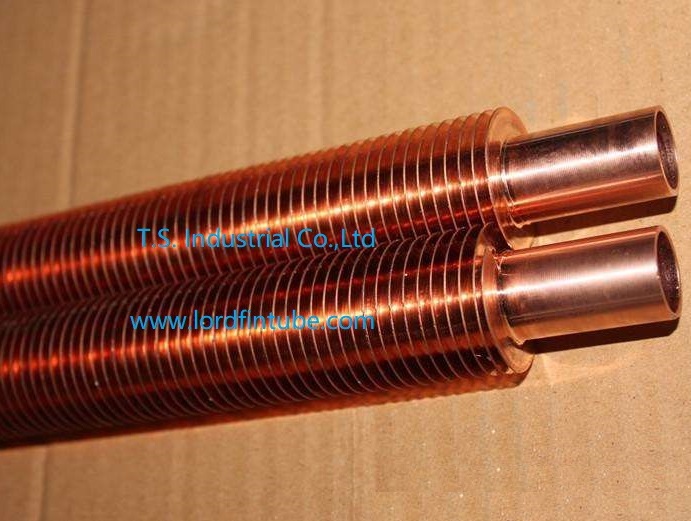The fin material of heat exchanger shall be selected according to the use and operating conditions of heat exchanger. At present, the commonly used materials include aluminum, aluminum alloy, copper, brass, nickel, titanium, steel, Inconel alloy, etc., of which aluminum and aluminum alloy are more used. The basic requirements for the base metal of finned tube heat exchanger are good brazing and formability, high mechanical strength, good corrosion resistance and thermal conductivity. Aluminum and aluminum alloy not only meet these requirements, but also have the characteristics that ductility and tensile strength increase with the decrease of temperature. Therefore, in compact heat exchangers all over the world, Especially in low-temperature compact heat exchanger, it has been widely used.
 Generally speaking, the base tube and fin of the finned tube can be combined with various metal materials, but in the specific selection, we should consider not only the properties and operating conditions of the cooled medium, but also the process performance, price and other factors of the material itself. In the oil refining and petrochemical industry, the fin material is mostly aluminum. Aluminum alloy tubes containing silicon manganese are generally used as bimetallic outer tubes, which is conducive to improving the hardness of rolled fins. Carbon steel strip is often used for sleeve, welding or wrinkle winding used in power industry. If the surface of these fins is simply plated with zinc, tin or aluminum, the service life can be greatly prolonged. Only when the anti-corrosion requirements are very high or there are special process manufacturing conditions, the stainless steel strip can be used as the fin material. According to the properties of fluid inside and outside the tube, the materials of tube and fin can be combined arbitrarily. For example, there are dozens of combined types of sg-k finned tube produced by spir-gills company in the UK. In China, most of the finned tubes with different material combinations are carbon steel pipe aluminum fins, and a small amount of copper copper, copper aluminum, aluminum aluminum, stainless steel aluminum and steel steel.
Generally speaking, the base tube and fin of the finned tube can be combined with various metal materials, but in the specific selection, we should consider not only the properties and operating conditions of the cooled medium, but also the process performance, price and other factors of the material itself. In the oil refining and petrochemical industry, the fin material is mostly aluminum. Aluminum alloy tubes containing silicon manganese are generally used as bimetallic outer tubes, which is conducive to improving the hardness of rolled fins. Carbon steel strip is often used for sleeve, welding or wrinkle winding used in power industry. If the surface of these fins is simply plated with zinc, tin or aluminum, the service life can be greatly prolonged. Only when the anti-corrosion requirements are very high or there are special process manufacturing conditions, the stainless steel strip can be used as the fin material. According to the properties of fluid inside and outside the tube, the materials of tube and fin can be combined arbitrarily. For example, there are dozens of combined types of sg-k finned tube produced by spir-gills company in the UK. In China, most of the finned tubes with different material combinations are carbon steel pipe aluminum fins, and a small amount of copper copper, copper aluminum, aluminum aluminum, stainless steel aluminum and steel steel.
The fixings used at the fin tube end to prevent fin loosening shall be stainless steel or galvanized carbon steel.
Reference: Carbon steel tube with aluminum fin, Stainless steel tube with aluminum fin, Copper alloy tube with aluminum fin, Copper alloy tube with copper alloy fin, carbon steel tube with carbon steel fin, stainless steel tube with stainless steel fin.
Comments
Post a Comment